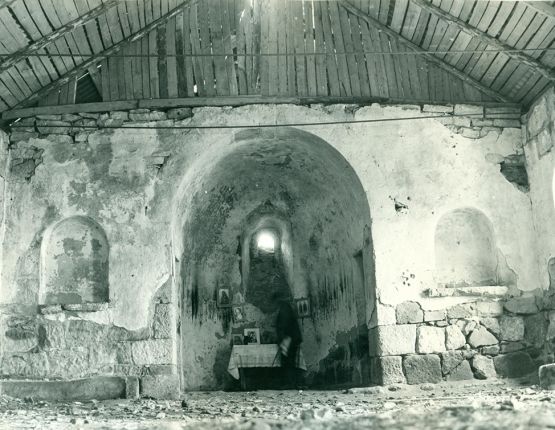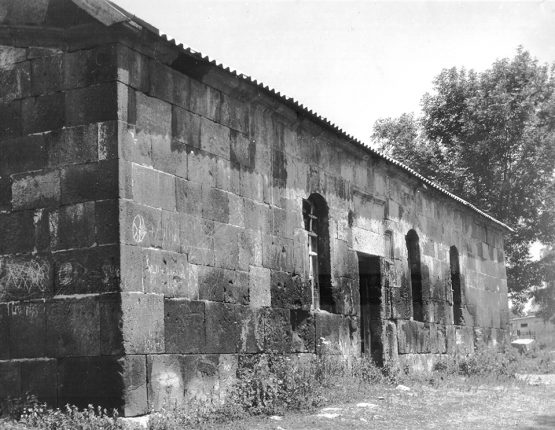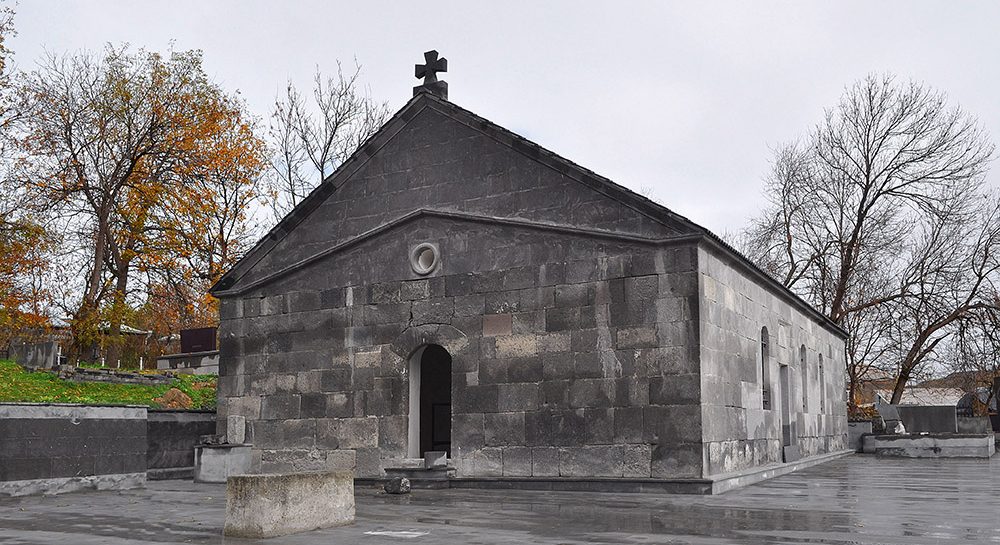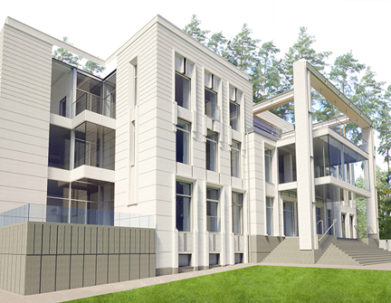Catholic church in the village Lernahovit, Armenia
Renovation & Heritage


The Catholic church of the middle of the 19th century is located on the northern outskirts of the village Lernahovit in the Lori region of Armenia. The church is rectangular in form with measurements 16.5 m by 9 m. Basing on archival photographs (1976), it had a gable wooden roof with a tiled coating. In its original form, the roof covering was earthen with a slight slope. The walls were erected from black volcanic tuff.


In the period of 1936 – 1968, the building was used as a collective farm barn.
As a result of renovation in the early 1990s, the roof and the cornices were dismantled and the elevation of the facade masonry was raised in two rows.
At that moment the condition of the southern façade was emergency.
During the inside works of the building, stone pillars of the columns were discovered. It means that the original building was divided into three naves, and the roof was supported by wooden poles.



Archival measurements are dated by 1976. During the reconstruction, there were made dismantle works, in order to strengthen and replace the weathered masonry elements, also the walls and foundations were reinforced, the original church appearance was restored, and the territory was improved.



Regarding to the decoration of the interior, there were used the elements of natural wood, stone and metal, which are inherent to the architecture of the 19th century.
In consequence of the restoration work, there were found the structure elements of the early Middle Ages, approximately of the 5th-6th centuries AD, in the masonry of the walls. Thus, it could be asserted, that the building of the church was built on the site of much earlier building.






